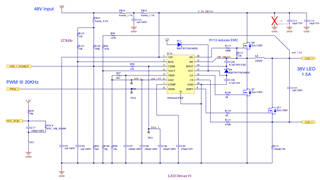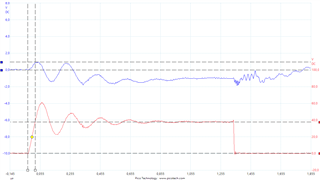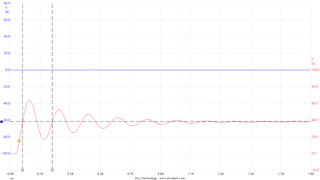Hi,
we have an issue with a TPS92641 design where the voltage on the LED significantly overshoots when the external PWM FET opens and turns on the light. Our schematic is pretty much standard. We chose quite a big inductor in order to keep ripple to a minimum, but using a smaller inductance doesn't improve the problem. We have tried several other changes, but without success so far.
So my question: What is causing the overshoot?
Here is the schematic:

And this is what we see on the scope, when Q11 is turned off:








